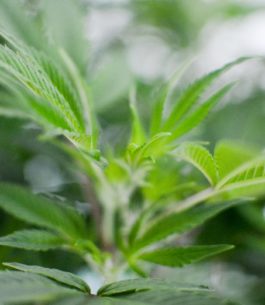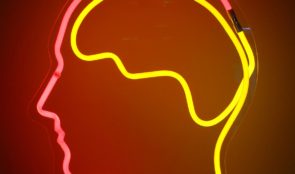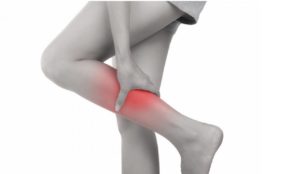Unless you’ve been living a Salinger-esque life of self-imposed isolation over the past 18-months or so, you’ve likely heard by now about CBD and its wide range of “natural healing effects.” Some pretty impressive studies have come out over the last several years highlighting the therapeutic potential of the compound, and of course, the FDA approved Epidiolex - the world’s first-ever CBD-based prescription drug - earlier this year back in June.
And in addition to its seemingly endless range of therapeutic potential, another big appeal of the cannabis-based extract is apparently how safe it is; the World Health Organization has called CBD a “generally well tolerated” compound with a “good safety profile,” and has said that it poses “no adverse health effects” when consumed.
Is all of this too good to be true, though? Any time you consume a foreign substance you risk disrupting the body’s natural state of balance and homeostasis, so there’s got to be some instances where the consumption of CBD can produce an adverse response, right?
In this article, we point out a few key things to keep in mind when thinking about taking some of the best CBD oil brands for the first time. Most media outlets and advertisers alike will have you believe that the “wonder drug” is 100% safe and side-effect free, but as you’ll see here shortly, there’s a bit more to the story than that.
Can you overdose on CBD? Understanding Toxicity Levels, LD50, and General Dosing
Back in the 1970s researchers for the journal Toxicology and Applied Pharmacology tried to establish an LD50 for cannabis by administering massive amounts of “Crude Marijuana Extract,” or CME (including CBD), to laboratory test monkeys.
In case you’re unaware, the LD50 for a specific drug is the dose it would take to kill 50% of a sample population; in other words, if 500 grams of “Drug X” were administered to 100 people and 50 of them died, you would say that the LD50 for “Drug X” is 500 grams.
Anyway, after pumping their test monkeys full of about 40,000 mg of CME and observing no deaths, researchers were left to no other alternative than to claim that the LD50 for cannabis extract was “greater than 10,000 mg per kg of body weight.”
To put this in perspective, an average adult male weighs about 80 kg. At 10,000 mg per kg, it would take more than 80,000 mg of cannabis extract to produce a “hypothetically” lethal response. This would be the equivalent of consuming 266 bottles of a standard 300 mg CBD oil, within about a 15-minute time frame. In other words, a sheer impossibility.
That being said, the U.S. government’s Toxicology Data Network states that the LD50 for CBD in rhesus monkeys is 212 mg per kg of body weight, or about 17,000 mg for an average 80 kg human.
While drastically lower than the numbers suggested in the 1970’s study, these numbers still represent a far greater dose of CBD than any human being would ever typically consume (a typical daily dose ranges between 15-40 mg per day).
In other words, for all intents and purposes, it is essentially impossible to overdose on CBD.
Careful with that Vape Pen!
That being said, there are still some inherent risks involved with consuming CBD - particularly for those who choose to consume it with vape pens or portable e-cigarettes.
While not much is known as of yet in regard to the long-term health effects of vaping, it has been suggested that vaping “non-winterized” CBD oils may result in the inhalation of particulate cuticle waxes that could, over time, settle in the lungs as granulomas.
All cannabis plants have a thin outer layer known as “cuticle wax.” When you smoke cannabis regularly (i.e. in a joint or a bowl), the wax is simply burned off via the process of combustion. Since vaporizers operate at much lower temperatures, however, it has been speculated that rather than burning away, the waxy outer layer is simply broken up into microscopic particles that can be inhaled into the lungs. This is not a good thing, in case you’re wondering.
The process of winterization removes the waxy outer layer from the plants (and indeed most high-quality cannabis vape oils are winterized), but this is still definitely something to keep in mind if you’re planning on using a vape pen or other vaping device with a CBD oil or CBD e-liquid.
Additionally, it’s been said that the temperature of your vape pen can play a huge role in the overall safety of CBD vape oil inhalation. Many vape oils on the market are thinned with polyethylene glycol (PEG) or propylene glycol (PG), both of which are understood to break down into formaldehyde (a known carcinogen) when exposed to temperatures above 200℃ (about 440℉).
Good, high-quality vaporizers should be able to operate at temperatures far below this, but studies have shown that low-quality single coil e-cigarettes can emit large amounts of gas formaldehyde. If in doubt, try and invest in as high-quality a vaporizer as you can, or at least look for a model that allows you to manually set and control the operating temperature.
Potential Dangers of Taking CBD with Other Medications
Another health factor to consider in regard to consuming CBD is the fact that the compound is known to inhibit several key enzymes that work to break down drug components in the blood.
In other words, if you are on prescription medication(s) and are thinking about incorporating CBD into your treatment routine, it’s highly advised you speak with a doctor first because the active compound may result in elevated (or decreased) levels of the drug compounds in your blood - which of course can lead to adverse reactions.
In fact, CBD is known to inhibit the action of cytochrome P450 enzymes, which are a class of compounds responsible for metabolizing the majority of prescription and OTC (over-the-counter) medications. In the FDA’s official Prescribing Information document for Epidiolex (a CBD-based epilepsy drug), it is specifically pointed out that “coadministration with a moderate or strong [P450] inhibitor will increase CBD plasma concentrations, which may result in a greater risk of adverse reactions…”
Again, make sure and speak with your doctor before taking CBD along with other medications.
What about the side effects of CBD?
Lastly, it’s important to point out that CBD does indeed pose some risks for mild negative side effects, regardless of what you might have heard or read about online.
For instance, the official FDA Medication Guide for Epidiolex points out that potential adverse side effects may include:
- Liver problems
- Loss of appetite
- Nausea/vomiting
- Fever
- Fatigue/drowsiness
- Yellowing of the skin (Jaundice)
- Itching
- Darkening of the urine
- Abdominal discomfort
- Suicidal thoughts in a “very small number of people” (about 1 in 500)
Of course, these are the noted side effects for Epidiolex, which is a prescription-only CBD drug available for victims of intractable epilepsy. In the World Health Organization’s global report issued in November 2017, it was noted that even among patients receiving very high doses of CBD (200-300 mg), the active compound was “tolerated in all patients, with no signs of toxicity or serious side effects.”
Final Thoughts: How safe is CBD, really?
All in all, CBD truly does appear to be a safe, well-tolerated compound for people of all ages — especially when compared to the harsh painkillers and prescription medications that so many millions of Americans take on a daily basis.
That said, it is not 100% devoid of adverse effects as some companies and media outlets would have you believe. Individuals taking other medications, for example, should use caution when implementing CBD into their treatment routine as the compound is known to inhibit enzymes that are responsible for breaking down drug components in the blood. Also, CBD vape oils can pose potential health risks, particularly when used with oils containing PEG, as exposure to high temperatures may result in the inhalation of carcinogenic compounds, including formaldehyde.
Worth your time
- Non Gamstop Casinos UK
- Best Non Gamstop Casinos 2025
- Non Gamstop Casinos UK
- Non Gamstop Casinos UK
- Casinos Not On Gamstop
- Casinos Not On Gamstop
- Casino Not On Gamstop
- Casino Italiani Non Aams
- Online Casino Canada
- Non Gamstop Casinos Uk
- Best Non Gamstop Casinos
- Meilleur Casino En Ligne France
- Casino Sites Not On Gamstop
- Non Gamstop Casino Sites UK
- Casino Online Non Aams
- Casino Sites Not On Gamstop
- Non Gamstop Casinos
- Meilleur Casino En Ligne France
- Meilleur Casino En Ligne Francais
- Casino Sites Not On Gamstop
- Non Gamstop Casinos UK
- Casinos Not On Gamstop
- Migliori Siti Casino Non Aams
- Meilleur Casino En Ligne
- Casino Non Aams
- Meilleur Casino En Ligne Belgique
- Siti Non Aams
- ブック メーカー おすすめ















